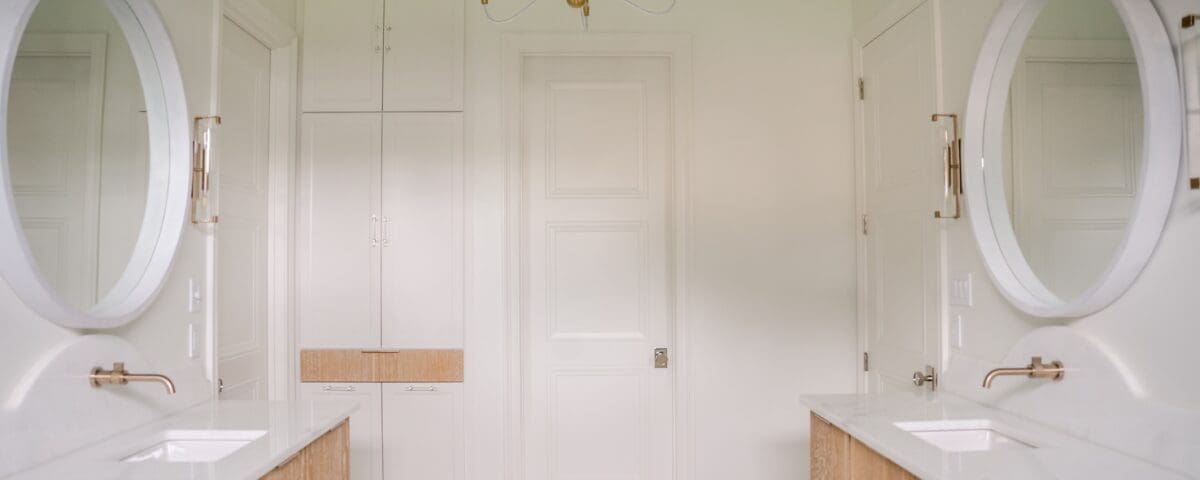
Transform Your Shower Routine with Aromatherapy
August 21, 2024
How to Clean Your Bathroom Sink in 10 Minutes or Less
September 19, 2024When it comes to designing the perfect bathroom, there are many different choices to make, from color schemes to picking the perfect sink. Two popular choices are drop-in sinks and vessel sinks. Each offers unique benefits, and the right choice depends on your bathroom’s design, functionality needs, and personal style preferences.
Below, we’ll break down the pros and cons, costs, aesthetic appeal, and material options of both drop-in and vessel sinks to help you make the best decision.
Drop-In Sinks
A drop-in sink, also known as a top-mount or self-rimming sink, is installed by dropping it into a pre-cut hole in the countertop. The rim of the sink rests on top of the counter, providing support and creating a border between the basin and the countertop.
Benefits of Drop-In Sinks
- Easy Installation: Drop-in sinks are easy to install, even for DIY enthusiasts.
- Affordability: These sinks are budget-friendly, with a wide range of options available.
- Compatibility: Works well with many countertop surfaces
- Easy Repairs: Due to the drop-in installation, repairs are often simpler and quicker.
Drawbacks of Drop-In Sinks
- Difficult to Clean: Grime and dirt can get trapped under the rim that rests on the counter, making cleaning a challenge.
- Outdated Aesthetic: Drop-in sinks have a classic look that may not suit a modern aesthetic.
- Counter Space Usage: They take up more counter space compared to other sink types.
- Potential for Leaks: Improper sealing can lead to leaks and water damage over time.
Costs of Drop-In Sinks
Drop-in sinks are affordable and have a wide range of options. The price varies based on the material, brand, and size, typically range between $50-$600. Professional installation costs can range between $150 and $300.
Installation Process
The installation of a drop-in sink is fairly straightforward. Start by cutting a hole to match the sink in the counter, if one is not already there. Then, lower the basin into the hole and secure it in place with clips or adhesive. The rim will rest on the counter, providing stability and support.
Material Options
Porcelain is the most common and offers a bright and clean look, but it can chip and crack over time. Stainless steel offers a more industrial look, and it is durable and resists corrosion, but shows scratches. Natural stone can add a touch of luxury and is long-lasting, but it can be expensive and requires high maintenance.
Drop-in sinks may not be the flashiest option, but they offer unbeatable practicality and timeless appeal for those looking for a reliable bathroom fixture.
Vessel Sinks
A vessel sink is a type of bathroom sink that sits entirely or partially on top of the countertop, unlike drop-in or under-mount sinks that are integrated into the counter.
Benefits of Vessel Sinks
- Visually Stunning: Often considered a statement piece and the focal point of a bathroom design.
- Customizable: Available in a variety of shapes, sizes, and materials.
- Placement Flexibility: Sits on top of the counter, allowing for flexible placement and providing counter space underneath the bowl.
- Easy to Clean: The simple design makes general cleaning straightforward.
Drawbacks of Vessel Sinks
- Increased Splashing: The elevated design can cause more splashing, especially if the faucet is not aligned correctly with the sink’s height and shape.
- Height Consideration: Can be difficult for short adults and children to reach comfortably.
- Grime Buildup: The meeting point of the sink and the counter needs frequent cleaning due to grime accumulation.
- Prone to Damage: Depending on the material, especially glass, vessel sinks are prone to chipping, cracking, and breaking. Stone vessel sinks are durable and scratch-resistant, but require regular sealing to prevent water damage.
Cost of Vessel Sinks
Vessel sinks are typically more expensive than drop-in sinks, ranging from $100 for basic models and designs to $600-$1200 for high-end designs and models.
Material Options
Glass vessel sinks bring a modern, sleek look to any bathroom. They add a sense of light and openness but are prone to chipping and breaking, making them less ideal for high-traffic or kid-friendly spaces.
Stone vessel sinks, on the other hand, offer a durable and luxurious feel, with materials like marble and granite providing unique textures. While scratch-resistant and long-lasting, they require regular sealing to prevent water damage and staining.
Vessel sinks can elevate a bathroom space due to their eye-catching appearance, but may not be ideal for a kid-friendly environment. These sinks can transform any bathroom into a sophisticated and modern space, with a vast array of materials and designs to match any style.
Read more: Is It Time for New Bathroom Fixtures? Know the Signs
When choosing between a drop-in and a vessel sink, your decision should be guided by your bathroom’s style, the level of functionality you need, and your budget. Drop-in sinks are affordable, practical, and offer a classic look. Vessel sinks, while more expensive, serve as a beautiful centerpiece for those seeking something unique and are willing to invest in extra care and maintenance.
Looking to upgrade your bathroom? Schedule a consultation with Facets of Lafayette, the premier plumbing supply store in Lafayette, Louisiana!



